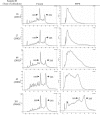Successful application of microarray technology to microdissected formalin-fixed, paraffin-embedded tissue
- PMID: 17251338
- PMCID: PMC1867423
- DOI: 10.2353/jmoldx.2007.060004
Successful application of microarray technology to microdissected formalin-fixed, paraffin-embedded tissue
Abstract
The establishment of a reliable method for using RNA from formalin-fixed, paraffin-embedded (FFPE) tissue would provide an opportunity to obtain novel gene expression data from the vast amounts of archived tissue. A custom-designed 22,000 oligonucleotide array was used in the present study to compare the gene expression profile of colonic epithelial cells isolated by laser capture microdissection from FFPE-archived samples with that of the same cell population from matched frozen samples, the preferred source of RNA. Total RNA was extracted from FFPE tissues, amplified, and labeled using the Paradise Reagent System. The quality of the input RNA was assessed by the Bioanalyzer profile, reverse transcriptase-polymerase chain reaction, and agarose gel electrophoresis. The results demonstrate that it is possible to obtain reliable microarray data from FFPE samples using RNA acquired by laser capture microdissection. The concordance between matched FFPE and frozen samples was evaluated and expressed as a Pearson's correlation coefficient, with values ranging from 0.80 to 0.97. The presence of ribosomal RNA peaks in FFPE-derived RNA was reflected by a high correlation with paired frozen samples. A set of practical recommendations for evaluating the RNA integrity and quality in FFPE samples is reported.
Figures





References
-
- Elkahloun AG, Gaudet J, Robinson GS, Sgroi DC. In situ gene expression analysis of cancer using laser capture microdissection, microarrays and real time quantitative PCR. Cancer Biol Ther. 2002;1:354–358. - PubMed
-
- Lehmann U, Kreipe H. Real-time PCR analysis of DNA and RNA extracted from formalin-fixed and paraffin-embedded biopsies. Methods. 2001;25:409–418. - PubMed
-
- Ramaswamy S. Translating cancer genomics into clinical oncology. N Engl J Med. 2004;350:1814–1816. - PubMed
-
- Soguero C, Ribalta T, Campo E, Sanchez-Tapies JM, Saiz JC, Bruguera M. Detection of hepatitis C virus RNA in more than 20-year-old paraffin-embedded liver tissue. Lab Invest. 1999;79:365–366. - PubMed
Publication types
MeSH terms
Substances
Grants and funding
LinkOut - more resources
Full Text Sources
Other Literature Sources
Miscellaneous

